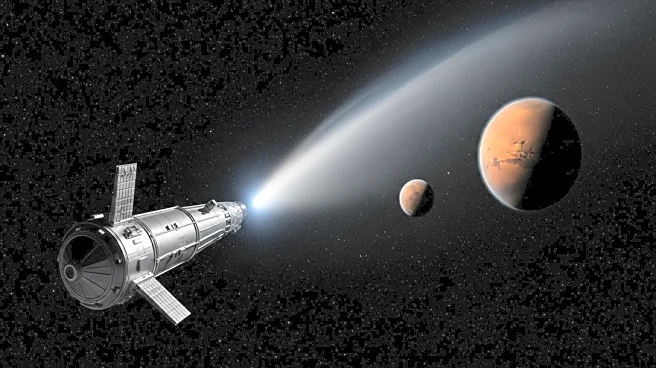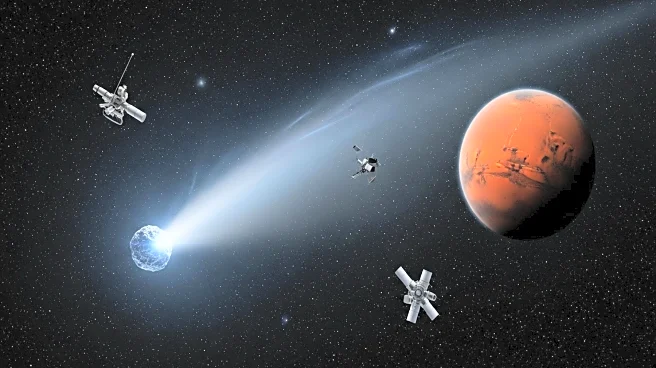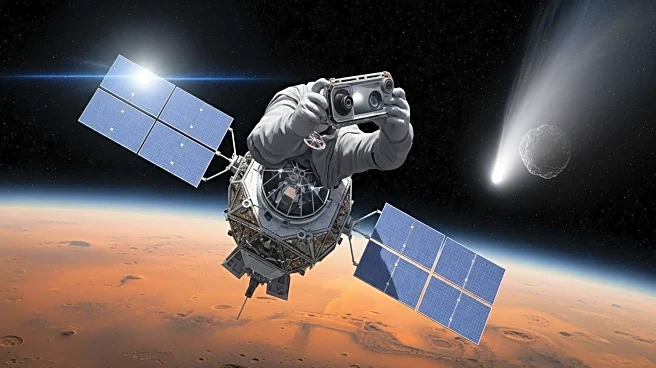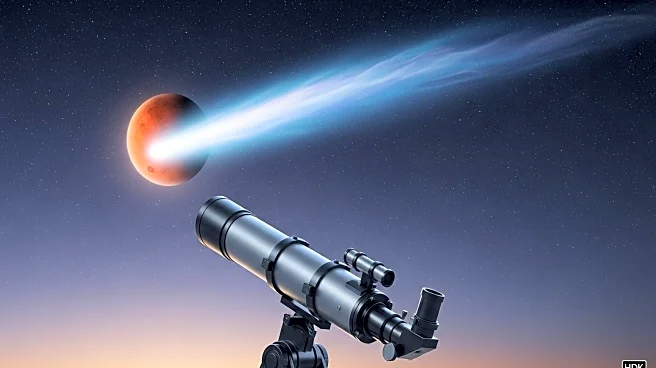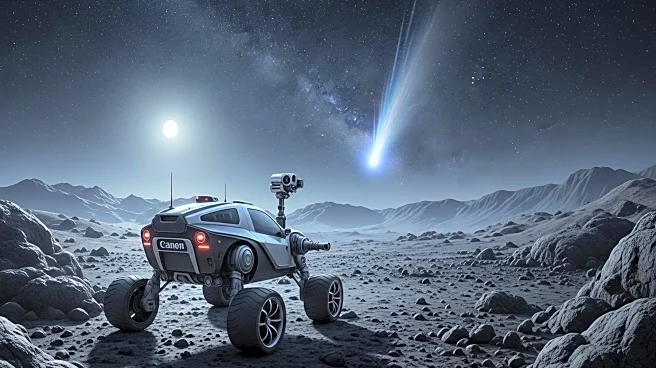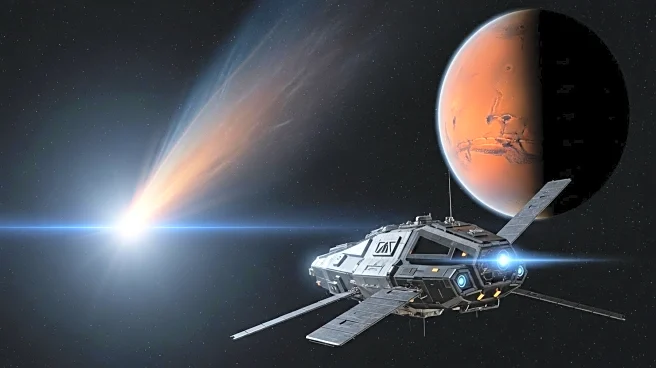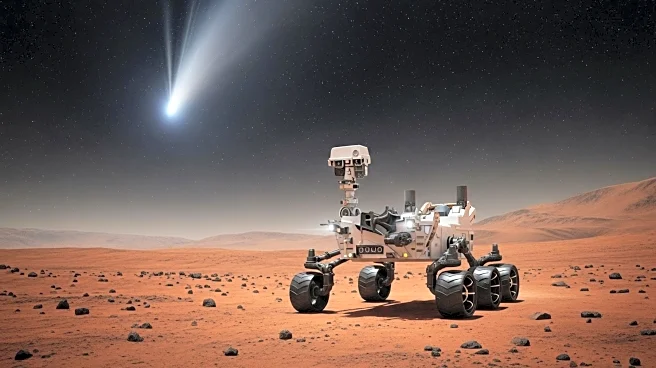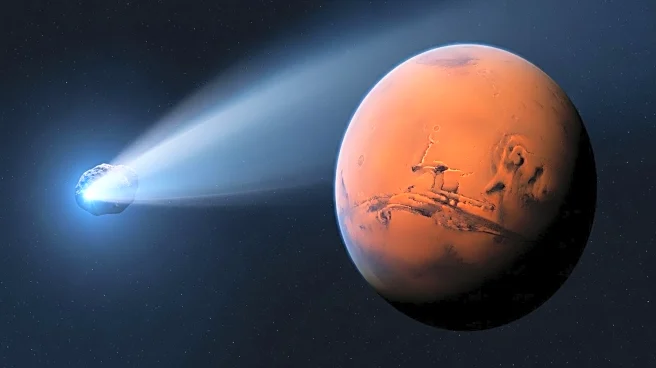What's Happening?
The interstellar comet 3I/ATLAS has made its closest approach to Mars, providing a rare opportunity for observation by spacecraft orbiting the planet. This comet, the third interstellar object detected in our solar system, follows previous discoveries of 1I/Oumuamua and 2I/Borisov. Observations began on July 1, with the comet expected to reach its closest approach to the Sun, known as perihelion, at the end of the month. Despite its proximity to Mars, the comet will remain 170 million miles from Earth, limiting high-resolution imaging opportunities. The James Webb Space Telescope and the Hubble Space Telescope have provided the best views so far, helping to estimate the comet's size, which ranges from the size of the Empire State Building to larger than Central Park.
Why It's Important?
The approach of 3I/ATLAS offers a unique chance to study an interstellar object, which can provide insights into the composition and behavior of comets from outside our solar system. Understanding these objects can enhance knowledge of cosmic phenomena and the processes that govern the movement of celestial bodies across the galaxy. The observations made by Mars-based spacecraft and Earth-based telescopes contribute to the growing field of interstellar astronomy, potentially revealing new information about the origins and trajectories of such objects. This research could inform future missions aimed at exploring interstellar space and understanding the dynamics of cometary bodies.
What's Next?
As 3I/ATLAS continues its journey through the solar system, astronomers will focus on gathering as much data as possible during its perihelion. The comet's trajectory and characteristics will be analyzed to refine models of interstellar object behavior. Future missions may be planned to intercept or study similar objects, enhancing the understanding of interstellar phenomena. The data collected from this comet could also inform the development of new technologies and strategies for observing distant celestial bodies.
Beyond the Headlines
The study of interstellar objects like 3I/ATLAS highlights the importance of international collaboration in space exploration. The involvement of multiple spacecraft and telescopes demonstrates the global interest in understanding cosmic phenomena. This research may lead to advancements in telescope technology and observation techniques, enabling more precise studies of distant objects. The findings could also contribute to the broader field of astrobiology, as scientists explore the potential for life in other star systems.

